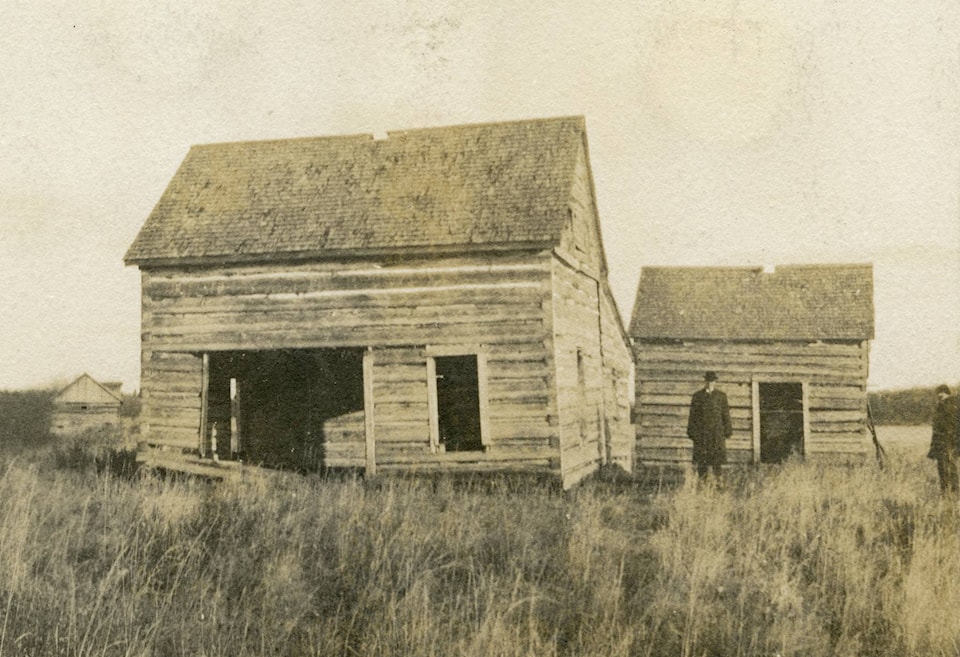As Christmas time approaches, it is obvious that experiencing a traditional Christmas is going to be very difficult, if not impossible, this year. However, this might be an interesting time to reflect back to some of the very first Christmases to be celebrated in Red Deer and central Alberta.
Those Christmases happened in the early 1880s when Red Deer was a raw frontier settlement. What is now downtown Red Deer consisted of a few fields and two or three small farmhouses.
The major focus of the settlement was the hamlet at an all-weather crossing across the Red Deer River. There was a collection of a half dozen small houses and shacks, along with a couple of small log stores and an overnight stopping house for travelers. After 1885, there was also a fort (Fort Normandeau), occupied briefly by the Canadian military, but later occupied by a small detachment of the North West Mounted Police.
As winter approached, the weather always turned cold and snowy. There were occasional chinooks. However, by early December, temperatures were almost always well below zero. There would also be at least a metre of snow on the ground.
From 1884 to 1887, the few settlers in the area would gather at one of the larger farmhouses in the district, or at Fort Normandeau, for Christmas celebrations. Starting in 1887, on Christmas Day, most of the settlers gathered at the log school house, which had just been built on the western edge of what is now West Park.
Although it had become the main community centre for the district, the log school house was small and plain. The walls, ceilings and floors were unpainted. Heat came from a large rusty box stove with pipes running the length of the one room. A few long, hand made benches, mostly without backs, provided the seating.
Services were generally provided by a local student missionary. Rev. Leonard Gaetz, one of the first homesteaders and a retired Methodist minister, often gave the main Christmas address.
Rev. Gaetz was a wonderful orator.
A brief account still exists of one of Leonard Gaetz’s Christmas sermons. He talked of the authenticity of the celebration of Christmas. He reminisced about past Christmases and described in vivid detail the home circles and scenes which are part of a traditional Christmas.
A small choir would then lead the assembled congregation in the singing of traditional hymns and Christmas carols.
There was a small Christmas tree, cut from the nearby bush, at the front of the classroom. This is where the gifts were distributed to the children, often by someone dressed up as Santa Claus or Father Christmas. The gifts were almost all hand-made as there were only the two small local stores.
After this daytime Christmas Day service, Rev. Leonard and Caroline Gaetz, with their usual hospitality, would invite as many guests as their home could hold for an afternoon gathering and supper.
The younger guests and family would go to the nearby Red Deer River and skated while preparations for the evening were completed. Everyone would then gather in the farmhouse for a huge Christmas feast.
After everyone had eaten all that they could, the older gentlemen retired to the parlour to argue the leading topics of the day, while the women cleared the table, cleaned the dishes and carried on conversations of their own. The young men slipped away to another part of the house for a smoke and “amusement.”
Later, Rev. Gaetz would gather all of his family and guests into the parlour. The rest of the evening was spent with speeches, readings from the Bible and caroling.
To quote one of the sayings that has survived from that time, “Christmas is a season, the return of which is hailed with delight by both the young and old of every Christian land. Why should we not, with our hearts, wish our friends “Merry Christmas” when we remember that the day is the anniversary of the event that brought “glad tidings of peace on earth, and good will to all men?”
Red Deer historian Michael Dawe’s column appears Wednesdays.
